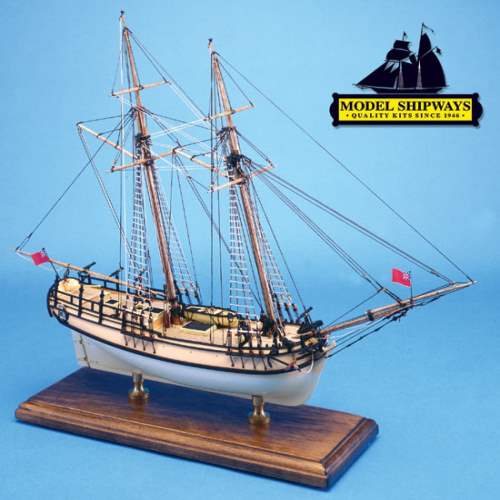Model Shipways Sultana 1:64
£145.00 each
Model Shipways Sultana 1:64 Scale- Solid Hull Kit MS2016
Built by Benjamin Hollowell in Boston in 1767, Sultana was seaworthy far beyond her size of 51 feet. The Royal Navy bought her in 1768, and she became one of Britain's most effective weapons in the fight against smugglers.
One of our most popular kits, the Model Shipways Sultana features a machine carved basswood hull that requires only light shaping and sanding. Other wooden parts, including the 2-1/8" ship's boat, are laser cut for a perfect fit. Plank-scored decking, spars, wood materials and eight cast metal swivel guns are all included. For historical accuracy, original rigging is duplicated with cotton cordage and 67 wooden blocks. Detailed plans by Ben Lankford and a 24 page instruction manual help you build an authentic replica. (Display base and brass pedestals are not included.)
Solid Hull Construction
Length: 432mm
Height: 381mm
Scale 1:64
Entry Level
Even if you’ve never built a model before, you can build this beautiful colonial schooner. Kit includes a pre-carved basswood hull, wooden parts, brass and cast metal fittings, nylon rigging, clear plans & instructions. (Wooden display base not included)
History of the Sultana
Built in the yard of renowned Boston Shipwright Benjamin Hallowell in 1767, Sultana might have gone on to little historical note if it weren't for chance. Sir Thomas Asquith, the wealthy merchant she was built for, decided she was too expensive to upkeep. Instead, he arranged for Sultana to be bought into a new fleet the Admiralty was assembling, small, quick ships to patrol the North America coast as Revenue Cutters.
Sultana survived a wintertime crossing from Boston to London unscathed, the Admiralty was initially disappointed with her. Promised as a 65 ton Schooner, roughly the size they sought, in reality, she was 52 tons - not large enough to accommodate a full schooner's crew of 30, and not stout enough in her timber to mount a single carriage gun on her decks. Still, the Shipwrights said of her "Appears well wrot and put together," and in the summer of 1768 she was fitted with topmasts, more sail, 8-1/2 pound swivel guns and a crew of 25 with newly commissioned Lieutenant John Inglis, a Philadelphia native, loyal to the Crown, in command.
Lieutenant Inglis and David Bruce, Sultana's Master and second in command, both kept meticulous logs of the vessel's position and duties for every day of her four and a half years of Naval service. Their entries, conjoined with the draughts made in the Deptford Yard and muster books of all 101 men who sailed aboard Sultana, make her one of the most well documented vessels of the Colonial period. Additionally they shed light onto previously unknown historical incidents - such as Inglis and Bruce dining with then Colonel George Washington at his Mt. Vernon Estate in 1770 - and mark the steady rise of Colonial disdain for British Rule.
In October 1772, after four years of hard patrolling, searching hundreds of vessels yet only making one seizure, Sultana was ordered back to England. That May she had been challenged by the crew of the Brig Caroline, while the previous year angry Colonists nearly put her to flames while she lay at anchor off Newport. Once the British Naval ensign ceased intimidating Colonial Ships, Sultana lost much of her authority and without it any merchantman with a carriage gun was more than her match for her overworked and under-armed crew.
Daring yet another North Atlantic crossing - this time getting knocked down onto her beam ends and surviving only by cutting away a small boat and essential provisions - Sultana arrived in England in December 1772 and was sold out of service the following January. The detailed records of the Navy cease at that point, and nothing of her fate is known in certainty.
